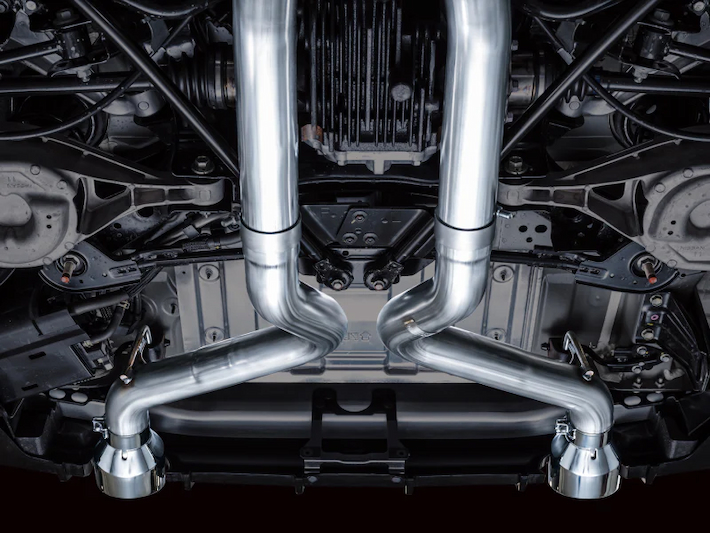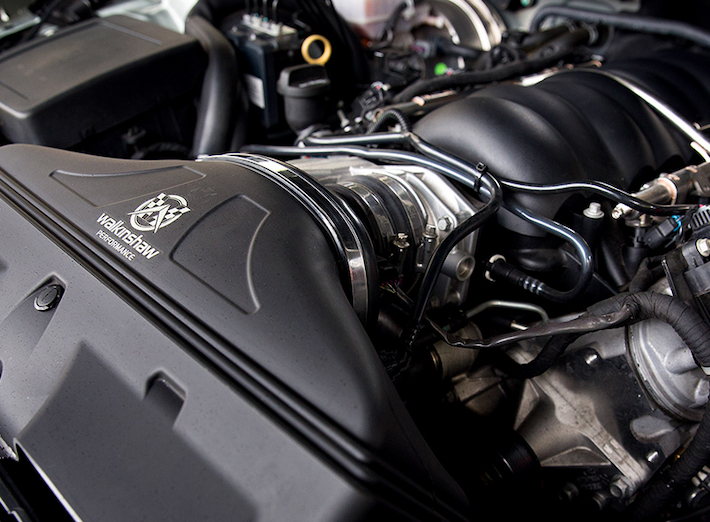The Holden Commodore enjoys a legendary status in Australian automotive history. The car was the best-selling model for nearly three decades, favoured for its home-grown design, big and grunty V6 and V8 engines, and something that you could live with. It was simple to maintain, simple to tune, and easy on the pocket -until rising fuel prices and high production costs killed all big Aussie cars.
Well-maintained cars from Holden’s heydays (early 1980s and 2000s) can now garner 6 figures. If you’re lucky enough to have one in the garage, and eager to get the best out of an Aussie motoring icon, here are 3 inexpensive additions for your Commodore:
Aftermarket Exhausts

Before HSV and Walkinshaw, standard Commodore engines were nothing to brag about. The early VB cars had dated technology, mediocre power, and even worse fuel economy. But with the big 5-litre V8, and racing tunes immortalised by one Peter Brock, Holden enjoyed climbing sales.
So, how does an aftermarket exhaust for Commodore help, especially where it matters most – performance? Stock piping in all cars is one area prone to cost-cutting, with bends that restrict freer airflow. This slows down exhaust gases on their way out and impacts engine efficiency. With spent gases still lingering in the piping, the engine can’t take its next breath for a new power stroke.
Aftermarket exhausts have pipes in straighter layouts and fewer bends, additionally aided by wider tubing along the whole exhaust length. The reworked design helps with exhaust velocity (how fast spent gases exit the car), and scavenging – or the vacuum to help with the next combustion cycle. This adds horsepower and torque, with faster and more efficient combustion cycles. Full header systems will see an increase of around 10 per cent, or roughly 20hp in early V8s to over 50hp in late model HSV cars.
Another benefit is a louder and deeper exhaust sound. The big Commodore engines don’t lack character, but with revised mufflers, there’s more substance to the whole package. Here straight-tube mufflers offer the best results, but if you’re looking for something street-legal, option “quiet” mufflers to lower decibel levels.
To get the exhaust that best suits your needs, manufacturers offer separates, such as 4-in-1 extractors for improved scavenging in V8 engines, revised muffler and resonator combos to tune the sound, and straight tube piping to increase velocity. Newer Commodores can additionally be fitted with high-flow catalytic converters, or twin cats (depending on cylinder count), valving butterfly tech in mufflers, and H and Y-pipe layouts with tips to match.
Choose from complete header-back systems if you’re after the biggest power gains, opt for cat-back systems to liven up older cars, or go with an inexpensive axle-back exhaust for Commodore if sound is your priority. Of course, there are also replacement parts tailored to meet OE requirements, but without significant impact on performance.
Strengthened Internals
The Commodore is still one of Australia’s tuning favourites. Adding power, such as bolting on superchargers, going with revised air intake systems, or choosing ECU remaps in newer cars necessitates stronger pistons, conrods and cranks. Cast-iron parts were sufficient for most versions of the V6 and V8 engines, but forged internals can handle higher stress rates, wider power bands, and higher torque and bhp figures without breaking a sweat.
Forged pistons, connecting rods and cranks resist bending, stretching, snapping or seizing, and catastrophic engine failure. Pistons for instance endure more abuse with increases in combustion heat and pressure acting on crowns, reducing the risk of deforming and loss of compression. The process hardens the metal, raises fatigue levels, increases ductility, and improves flexibility in abrupt changes to engine speeds. The lower weight also allows higher RPMs without impacting strength and longevity. In short, forged internals are necessary to handle higher power numbers, and keep going where stock cast parts fail. For the best results, pair pistons and conrods of matching strength, and consider revised crankshaft layouts or heat treating if you’re pushing very high numbers.
Air Intakes

Oxygen-rich air in higher volumes, and corresponding fuel in the right ratios is a simple way to increase power output in any engine. This is also true of early carburetted and later injected Commodore engines. Cold air intakes, with filters and piping, pushed lower to scoop cooler air, and heat-shielded piping are a basic entry point to more power, better acceleration, and improved throttle response. Step up to ram air intakes with longer tube scoops for even more power, or short ram intakes if other mods limit space in the engine bay. All types though offer better filtering and cleaner air. Most also have reusable oiled cotton gauze filters tailored to tackle harsher Aussie road and weather conditions. All Commodore engines (even the rare 1.9-litre 4-cylinder) will benefit from better breathing, and when paired with a matching exhaust, considerable power gains.
Summing Up
The Commodore may well be past its prime, but there are roaring lion-badged cars still going strong, and tuned for more power. Replacement spares and performance parts are easy to find, with the basics like air intakes, strengthened forged internals and exhaust systems to suit different Commodore and HSV badges. This is just a refined list of aftermarket goodies lending more usability to a retired local legend. For an even better driving experience, consider extras like throttle controllers, GPS trackers or bespoke Holden seat covers.



